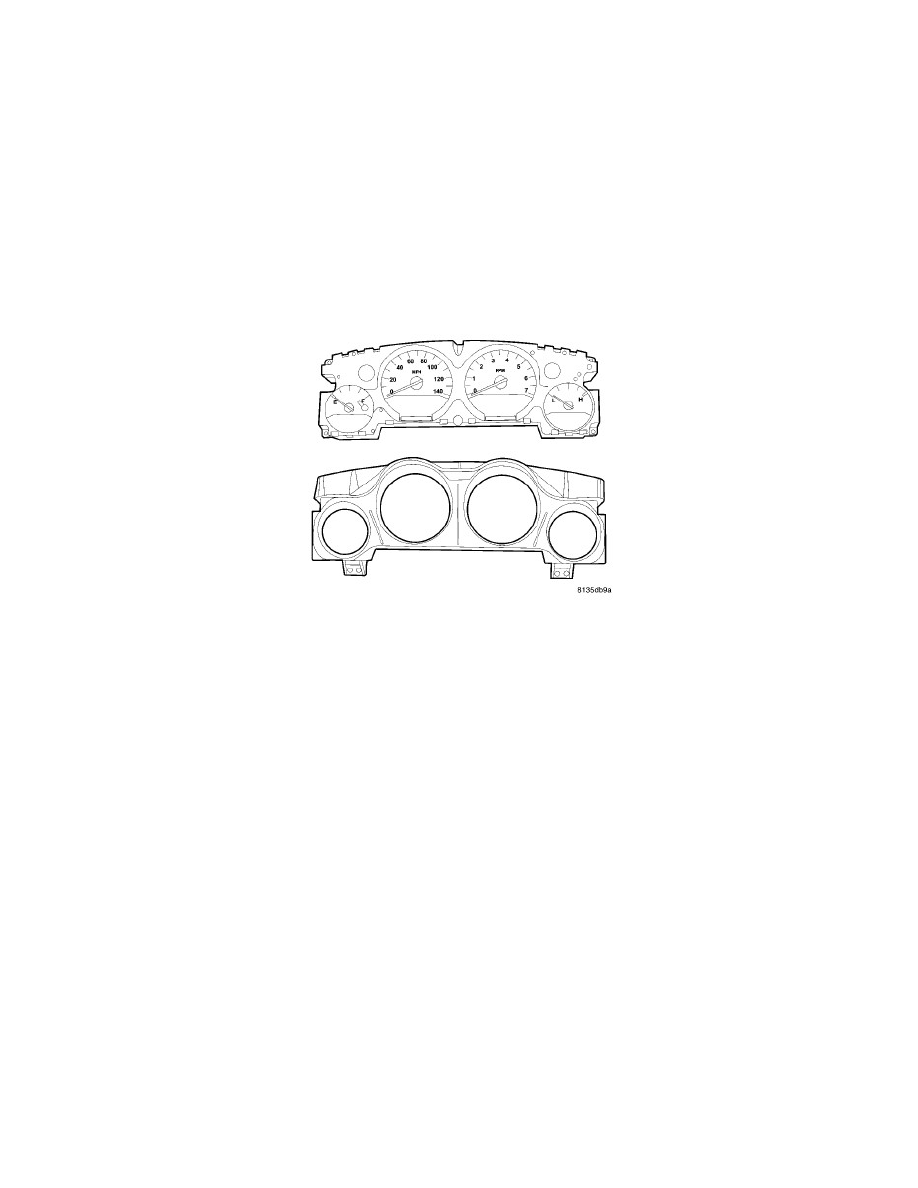Challenger V8-5.7L (2010)

Instrument Cluster / Carrier: Description and Operation
Instrument Cluster - Description
DESCRIPTION
There are three clusters available for this vehicle: Base, Premium and Premium SRT. While there are three noticeable different clusters available they all
have many of the same features. All have four large easy to read gauges: Fuel, speedometer, tachometer and engine temperature, they all offer up to 19
warning indicators depending on equipment level, and they all offer a Vacuum Fluorescent Display (VFD). The most noticeable difference is the VFD
unit, the speedometer.
The base instrument cluster comes with a standard VFD unit for displaying odometer information, and several indicators as well as a transmission gear
selector position indicator (PRNDL) if equipped with and automatic transmission. The premium models come with an optional Electronic vehicle
Information Center (EVIC) that is discussed elsewhere in the manual, See: Driver/Vehicle Information Display/Description and Operation/Electronic
Vehicle Information Center - Description. Available speedometers are a 160 MPH and a 180 MPH speedometer on vehicles equipped with the SRT
package, (gauge faces glow blue-green when headlamps are on) and the white gauges with orange pointers, (gauges glow white when headlamps are on).
The instrument cluster, located in the instrument panel above the steering column is only visible through an opening in the cluster bezel. The main body
of the instrument cluster, including the mounts and the electrical connections, are concealed within the instrument panel behind the cluster bezel. The
instrument cluster for this vehicle also includes the hardware and software necessary to serve as the electronic body control module known as the Cab
Compartment Node or (CCN).
The instrument cluster gauges and Light Emitting Diode (LED) indicators, are visible through a dedicated opening in the instrument panel behind the
cluster bezel, and are protected by a clear plastic cluster lens. Just behind the cluster lens is the cluster hood and integral mask. The hood, serves as a
visor and shields the face of the cluster from ambient light and reflections to reduce glare, while the cluster mask serves to separate and define the
individual gauges from the indicator areas and trims the outside perimeter of the cluster overlay.
VEHICLE SYSTEMS SUPPORT
Besides the typical instrument cluster gauge and indicator support, the electronic functions and features the CCN supports or controls include the
following:
-
Accessory Power Delay Relay Control - The Front Control Module (FCM) provides timing and control for the accessory power delay relay,
based upon customer inputs to the CCN across the CAN Bus, as well as ignition switch and the door ajar switch inputs to the FCM.
-
Audible Warnings - The CCN electronic circuit board is equipped with an audible tone transducer and programming to provide various audible
alerts to the vehicle operator, including chime and beep tones. An electromechanical relay is soldered onto the circuit board to produce audible
clicks that emulate the sound of a conventional turn signal or hazard warning flasher. See: Audible Warning Device/Description and
Operation/Chime/Buzzer - Description.
-
Automatic Headlamps Control - On models equipped with optional automatic headlamps, the CCN monitors inputs from both the headlamp
switch and a sun load sensor located on the top of the instrument panel to provide automatic headlamps.
-
Change Oil Indicator - A change oil indicator is standard equipment on all instrument clusters built for the US market. On Electronic Vehicle
Information Center (EVIC) equipped vehicles, an Oil Change Required message appears in the upper portion of the VFD unit. The EVIC change
oil indicator consists of a textual Oil Change Required message that appears within the EVIC VFD. On non-EVIC equipped vehicles, a Change
Oil message displays in the odometer area of the VFD. The change oil indicator message in the odometer area of the VFD consists of cycling
textual Change then Oil messages which appear in place of the odometer/trip odometer information.
-
Enhanced Accident Response Support - The CCN monitors an input from the Occupant Restraint Controller (ORC). Following an airbag
deployment, the ORC immediately disables the power lock output and unlocks all doors by activating the power unlock output, it then enables the
power lock output if the power lock switch input remains inactive for two seconds. The CCN also monitors input from the Powertrain Control
